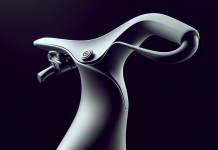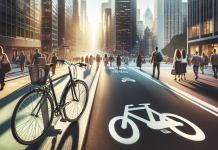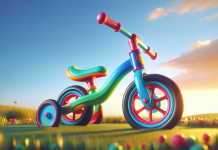Looking for the perfect bike for your child? Look no further! Our article explores the world of kids bikes, focusing on the importance of proper sizing and the range of safety features available. From adjustable seat heights to sturdy training wheels, we’ve got you covered. Let’s dive in and discover how to ensure your child’s biking experience is not only fun but also safe.
Table of Contents
Importance of Properly Sized Kids Bikes
Choosing the right size bike for your child is essential for their safety and overall riding experience. Properly sizing a kids bike involves considering their age and height. By selecting the correct size, you can ensure that your little one feels comfortable, confident, and in control while riding.
Effects of riding an improperly sized bike
Riding an improperly sized bike can have several negative effects on your child’s biking experience. Firstly, it can put a strain on their muscles and joints. When their legs are constantly extended or bent too much, it can lead to discomfort and even muscle fatigue. Additionally, maneuvering and controlling an ill-fitting bike becomes challenging, which increases the risk of accidents and injuries.
Increasing comfort and stability with the right size
Choosing the right size bike for your child enhances their comfort and stability during rides. With the proper leg extension and pedal reach, they can avoid any unnecessary strain on their limbs. As a result, their balance and coordination improve, allowing them to navigate their bike with ease. Moreover, a well-fitted bike reduces fatigue and back discomfort, ensuring that they can enjoy their rides for longer durations.
Safety Features for Kids Bikes
When purchasing a kids bike, it’s crucial to consider the safety features it offers. Here are some essential safety features to look for:
Sturdy frame and construction
A sturdy frame is the foundation of a safe kids bike. Look for bikes made with quality materials and durable construction. The frame should be able to withstand the occasional bumps and falls that come with learning to ride. Additionally, ensure that the bike’s weight is suitable for easy handling, so your child can maneuver it confidently.
Appropriate braking system
An appropriate braking system is vital for your child’s safety. Look for bikes that have both front and rear hand brakes. This setup allows them to develop proper braking habits and ensures they can stop quickly when needed. For younger children, bikes with coaster brakes, which engage when the pedals are pushed backward, can be a suitable option.
Reflectors and lights for visibility
Visibility is crucial, especially when riding during low light conditions. Look for bikes that come with front and rear reflectors, as they make your child more visible to others on the road. Some bikes may even have integrated lights or light attachments, which can enhance visibility further. Reflective stickers or accents on the frame can also aid in making the bike more noticeable.
Protective gear and accessories
In addition to the bike itself, investing in protective gear and accessories is essential for your child’s safety. A helmet is a must-have item to protect their head in case of falls or accidents. Knee and elbow pads provide additional safety and prevent injuries. Consider adding a bike bell or horn to allow your child to signal their presence to others on the road. Lastly, a chain guard can prevent clothing from getting entangled in the bike’s chain.
Choosing the Right Size Kids Bike
To choose the right size kids bike, it’s important to consider various factors. Here are some tips to help you make the right decision:
Consider the child’s age and height
Age and height are two critical factors in determining the appropriate bike size for your child. Different age brackets typically correspond to specific bike sizes. However, keep in mind that children grow at different rates, so it’s essential to consider their height in conjunction with their age.
Use manufacturer’s size guidelines
Most bike manufacturers provide size guidelines for their products. These guidelines take into account the child’s age and height, enabling you to make an informed decision. Follow the manufacturer’s recommendations to ensure the best fit for your child.
Try before you buy
Before purchasing a kids bike, it’s always a good idea to let your child try it out. Many bike stores offer test rides, allowing your child to get a feel for the bike’s size and fit. This firsthand experience can help both you and your child determine if the bike is comfortable and suitable for them.
Adjustable seat and handlebars
Kids grow quickly, so having an adjustable seat and handlebars on their bike is beneficial. This feature allows you to make necessary adjustments as they grow, ensuring a proper fit throughout their use of the bike. An adjustable seat and handlebars provide flexibility and can extend the lifespan of the bike.
Growth room for long-term use
Considering your child’s growth is essential when selecting a kids bike. While it’s tempting to choose a bike that fits perfectly at the moment, remember to provide some room for growth. A bike with a bit of extra space will accommodate your child as they grow taller and ensures they can enjoy the bike for a more extended period.
Effects of Riding an Improperly Sized Bike
Riding an improperly sized bike can have detrimental effects on your child’s biking experience. Here are some of the effects to be mindful of:
Strain on muscles and joints
When a child rides a bike that is too small or too big, it places strain on their muscles and joints. Prolonged riding under such conditions can lead to discomfort, muscle fatigue, and possible long-term issues. It’s crucial to select a properly sized bike that allows for a comfortable riding position and proper body alignment.
Difficulty in maneuvering and control
An ill-fitting bike makes it difficult for a child to maneuver and maintain control. They may struggle to steer, balance, and stop safely. This lack of control increases the risk of accidents, falls, and injuries. By choosing the right size bike, you can provide your child with the confidence and control they need to ride safely.
Increased risk of accidents and injuries
Riding an improperly sized bike significantly increases the risk of accidents and injuries. A bike that is too large may cause a child to lose balance, leading to falls and collisions. On the other hand, a bike that is too small may limit their control, making it harder to respond to hazards on the road. To minimize the risk of accidents, it’s important to ensure that the bike fits your child correctly.
Increasing Comfort and Stability with the Right Size
Choosing the right size bike for your child offers several benefits in terms of comfort and stability. Consider the following advantages:
Proper leg extension and pedal reach
A properly sized bike allows your child to achieve a proper leg extension while pedaling. This means their legs are not fully extended or overly bent, reducing strain and discomfort. Additionally, the right size ensures their feet comfortably reach the pedals, allowing for a smooth and efficient pedaling motion.
Improved balance and coordination
A bike that fits well enhances your child’s balance and coordination while riding. With a stable riding position and optimal weight distribution, they can maintain better control over their bike. This improved balance and coordination make it easier for them to navigate turns, avoid obstacles, and ride more confidently.
Reduced fatigue and back discomfort
Comfort during extended rides is essential, especially for longer biking adventures. A well-fitted bike reduces fatigue and back discomfort, enabling your child to enjoy their rides for longer durations. By eliminating unnecessary strain on their body, they can focus more on the joy of riding rather than discomfort.
Sturdy Frame and Construction
When it comes to kids bikes, a sturdy frame and construction are key. Here’s why:
Quality materials and durability
A sturdy frame is necessary to withstand the wear and tear that comes with kids biking adventures. Look for bikes made with quality materials such as aluminum or steel, as they provide durability and longevity. Well-built bikes can handle bumps, jumps, and occasional crashes without compromising safety.
Proper bike weight for easy handling
The weight of a bike plays a significant role in how easily a child can handle it. Ensure that the bike’s weight is appropriate for your child’s strength and size. A bike that is too heavy can be challenging to maneuver and control, while one that is too light may lack stability. Finding the right balance is vital for a safe and enjoyable riding experience.
Welded or reinforced connections
A bike with welded or reinforced connections ensures structural integrity and reduces the risk of component failure. Check the joints and connections where different parts of the bike meet. They should be securely welded or reinforced to provide a strong and safe foundation for your child.
Smooth edges and protective coverings
Kids can be prone to bumps and scrapes, so it’s important to choose a bike with smooth edges and protective coverings. Avoid bikes with sharp or jagged edges that could potentially cause injuries. Look for bikes with handlebar and stem pads, as well as chain guards, to provide added protection.
Appropriate Braking System
Having an appropriate braking system on a kids bike is crucial for their safety. Consider the following factors:
Front and rear hand brakes
A bike with both front and rear hand brakes can help your child develop proper braking skills. This setup allows them to distribute braking force evenly, making stopping more efficient. Teaching your child to use both brakes simultaneously from an early age promotes good riding habits and enhances their safety.
Coaster brakes for younger children
For younger children who may find hand brakes challenging, coaster brakes can be a suitable option. Coaster brakes engage when the pedals are pushed backward. This simpler braking mechanism allows young riders to focus on balance and steering while still providing them with a way to stop their bike safely.
Brake lever reach adjustment
Kids have varying hand sizes and strengths, so having a brake lever reach adjustment is beneficial. This feature allows you to adjust the position of the brake levers, ensuring that your child can comfortably reach and operate them. Proper brake lever reach improves their control over the bike and enhances their overall riding experience.
Brake performance and responsiveness
When choosing a kids bike, pay attention to the brake performance and responsiveness. Test the brakes to ensure they engage smoothly and quickly, without any delay or excessive force required. Reliable brakes are essential for your child’s safety, as they allow them to stop promptly when needed.
Reflectors and Lights for Visibility
Enhancing visibility is essential to keep your child safe on the road. Look for the following features:
Front and rear reflectors
Many kids bikes come equipped with front and rear reflectors as standard safety features. Reflectors increase visibility, especially in low light conditions, alerting drivers and pedestrians to your child’s presence on the road. Double-check that these reflectors are securely attached and cover a wide angle to maximize effectiveness.
Integrated lights or light attachments
In addition to reflectors, some bikes may come with integrated lights or offer attachments for lights. These lights further enhance visibility, allowing your child to ride safely during dawn, dusk, or at night. Lights can make a significant difference in how well your child is seen by others on the road.
Reflective stickers or accents on the frame
Consider a bike that has reflective stickers or accents on the frame. These additional reflective elements catch the light and increase visibility from various angles. They can be an excellent supplement to other visibility features, making your child more noticeable to drivers and pedestrians.
Protective Gear and Accessories
While the bike itself is crucial, protecting your child with appropriate gear and accessories is equally important. Consider the following items:
Helmet for head protection
A properly fitting helmet is a must-have for your child’s safety. Look for helmets that meet safety standards and have the right size for your child’s head. Properly worn helmets significantly reduce the risk of head injuries in case of falls or accidents.
Knee and elbow pads for added safety
Knee and elbow pads provide an extra layer of protection during biking adventures. These pads cushion impact and minimize the risk of scrapes, cuts, or more serious injuries to these delicate joints. They are particularly important for young riders who are still developing their skills and balance.
Bike bell or horn for signaling
Teaching your child the importance of signaling their presence is crucial. A bike bell or horn allows them to make others aware of their approach, preventing accidents and promoting safe riding habits. Encourage your child to use their bell or horn when approaching pedestrians or fellow riders.
Chain guard to prevent clothing entanglement
A chain guard is a useful accessory that prevents clothing from getting caught in the bike’s chain. This not only prevents accidents but also keeps clothing clean and free from grease marks. A chain guard is especially important for younger riders who may be wearing loose-fitting pants or skirts.
Consider the Child’s Age and Height
To choose the right size kids bike, consider your child’s age and height. Here are some factors to keep in mind:
Determining appropriate bike size based on age
Different age brackets typically correspond to specific bike sizes. However, it’s essential to remember that children grow at varying rates. Referencing age-related size recommendations can provide a general starting point, but it’s equally important to consider your child’s height and leg length.
Measuring height accurately
Measuring your child’s height accurately is crucial in determining the right bike size. Measure their height without shoes on, from the top of their head to the ground. Use this measurement as a reference when comparing it to the manufacturer’s size guidelines.
Choosing between balance bikes, tricycles, and pedal bikes
Depending on your child’s age and abilities, different types of bikes may be appropriate. Balance bikes are excellent for teaching younger children how to balance, while tricycles provide stability and support for those who are just starting out. As your child grows and gains confidence, pedal bikes become a suitable option. Consider your child’s comfort level and skill progression when selecting the type of bike that best suits their needs.
In conclusion, choosing a properly sized kids bike and ensuring it has various safety features is essential for your child’s well-being and enjoyment of biking. By considering their age, height, and the guidelines provided by manufacturers, you can select the right size bike. Additionally, explore the safety features such as a sturdy frame, appropriate braking system, reflectors, and protective gear. With the right size and safety features, your child can experience greater comfort, stability, and ultimately, a more enjoyable biking experience.





































